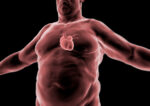2008 Guideline Still Helps Diagnose Majority of Cushing’s Cases: Study

The 2008 Endocrine Society Practice guideline remains a valid tool for defining the clinical signs and at-risk groups that should undergo screening for Cushing’s syndrome, according to a 10-year prospective German study.
However, while 73% of the Cushing’s diagnoses were made in the at-risk groups defined by the guideline, the remaining 27% of patients had symptoms that are currently not considered for screening, supporting their inclusion in clinical practice, the authors wrote.
The study “Whom should we screen for Cushing’s syndrome: The Endocrine Society Practice Guideline Recommendations 2008 revisited” was published in The Journal of Clinical Endocrinology & Metabolism.
Cushing’s syndrome is marked by too much cortisol, which results in metabolic complications such as obesity, hypertension (high blood pressure), diabetes, and cardiovascular problems.
These symptoms and complications overlap with several other conditions, however, making Cushing’s difficult to diagnose and manage.
The clinical practice guideline issued by the U.S. Endocrine Society in 2008 recommends that only a defined set of patients with a suspicion of Cushing’s be screened for the disease. This includes adults with unusual symptoms for their age – such as osteoporosis and hypertension – and those with multiple symptoms characteristic of Cushing’s that continue to progress over time.
A third group includes patients with an adrenal incidentaloma (a tumor in the adrenal gland that’s found by accident while doing imaging analyses for other health conditions) that’s compatible with an adenoma, or a form of benign tumor that develops in glands.
Screening is also advised for children with below average height whose weight is higher than normal for their age.
Expanding screening beyond these initial at-risk populations remains a topic of debate, however.
Researchers at the Maximilians-Universität München, Germany examined the clinical signs and symptoms of patients who were transferred to their clinic from 2012 to 2021 for a suspected Cushing’s syndrome diagnosis.
The patients were evaluated according to the current guidelines, the main complaint that led to a Cushing’s suspicion was examined, and standard biochemical tests that measure cortisol in a number of circumstances were done to confirm the diagnosis.
A total of 377 patients were included in the analyses. Among them, 93 patients with a median age of 49 were confirmed to have Cushing’s, while the disease was excluded in the remaining 284 patients (median age, 36).
There were a total of 18 key symptoms that led physicians to suspect Cushing’s syndrome with the three most common being obesity and weight gain, adrenal or pituitary incidentaloma, and hypertension.
Six of those complaints were significantly different between patients and those in whom Cushing’s was ruled out. In particular, symptoms such as osteoporosis, incidentaloma, metabolic syndrome, and myopathy (muscle weakness), as well as the presence of multiple symptoms were all associated with a greater likelihood of being diagnosed with Cushing’s.
In contrast, obesity or recent weight gain (in the previous year) was linked with a 89% lower likelihood of receiving a diagnosis.
“Obesity and weight gain were the most frequent chief complaint to screen for [Cushing’s] but also the presenting problem that made diagnosis … most unlikely,” the team wrote. “Obesity or weight gain was in fact the “only” chief complaint in these patients; they did not have another major clinical problem.”
Regarding the screening guidelines, the team found that of the 93 patients with a confirmed diagnosis, 68 (73%) were within the at-risk groups covered by the guideline. The remaining 25 diagnoses (27%) were made in patients who didn’t fall in any of the groups.
Seen differently, while 34% of the screened patients covered in the guidelines eventually got a diagnosis, only 12% of the 203 patients not covered got one, indicating the guidelines are able to diagnose about three-quarters of all Cushing’s patients.
While “clinical practice differs from official recommendations, our study underlines the validity of the recommendations of the 2008 Endocrine Society Practice guideline: Patients falling into one of the three at risk groups of patients have a reasonable to high likelihood for [Cushing’s syndrome] justifying screening,” the scientists said.







